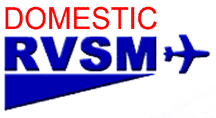 |
||||||
|
|
Number
313
|
November
2005
|
||||
|
P.O. Box 189, Moffett Field, CA 94035-0189 |
||||||
|
|
||||||
 |
||||||
|
|
Number
313
|
November
2005
|
||||
|
P.O. Box 189, Moffett Field, CA 94035-0189 |
||||||
|
|
||||||
|
While a broad range of communication issues are commonly cited in incidents reported to ASRS, the following reports focus on a single issue - the effect of non-standard situations on personnel whose English may be limited to "standard" aviation terminology. People with a limited command of English often rely upon the context of the situation to aid their understanding and to prompt their use of certain phraseology. As noted in the following reports, a change in the normal sequence of events can result in a potentially dangerous miscommunication. On a Roll When language factors detract from precise communications, it is vital to clear up any ambiguity before acting. This B757 crew's experience at a foreign airport was a case in point that led to some "sound" advice.
If flight crews involved in international operations heed the preceding advice, similar incidents can be avoided. Unfortunately, the admonition didn't get out soon enough for this A330 crew. The similarity to the first report is startling and serves to reinforce the caution that "it can happen to you."
Clearly Not Cleared In this Air Traffic Controller's report, a foreign pilot misinterpreted what appeared to be a clearly stated question. It just happened to come when the pilot was expecting to hear something else.
 Domestic RVSM Wake Turbulence Reporting Reminder Domestic RVSM Wake Turbulence Reporting Reminder
As announced in the February, 2005 CALLBACK (#305), The FAA has requested that pilots submit reports (via NASA/ASRS) on wake turbulence incidents that occur in RVSM airspace (FL290 - 410 inclusive) in the lower 48 states of the United States, Alaska, Offshore Airspace, and the San Juan FIR. Reporting Procedures: Pilots reporting specifically on wake turbulence incidents should submit two forms: (1.) The NASA ASRS General reporting form for Pilots (NASA ARC 227B). The “Type of Event/Situation” block on this form should be annotated with the words, “Wake Turbulence.” (2.) The FAA “Supplemental Wake Turbulence Information” form. Both
forms are available for download from the “Safety
Reporting” section of the FAA’s RVSM Documentation
Web Page: http://www.faa.gov/ats/ato/rvsm_documentation.htm
by following the links at the bottom of the page. Pilots
reporting on wake turbulence incidents are encouraged to
file individual NASA ASRS reports even if a report has been
filed through their Aviation Safety Action Program (ASAP).
As noted
in the last issue of CALLBACK, ASRS is now providing an
automated CALLBACK E-mail subscription service (still FREE)
in lieu of the paper copy. We will continue to offer a print
version for those who want to continue receiving paper copies.
With the e-mail subscription our readers will receive a
monthly e-mail notice that informs subscribers that the
new issue of CALLBACK is available and provides a link to
the online version of CALLBACK. Also provided within this
e-mail notice is a link to a PDF version of CALLBACK, links
to the CALLBACK Archive, ASRS Reporting Forms, and the ASRS
Home Page. ASRS’s goal is to give readers immediate
access to our newsletter, and to ASRS resources. To sign
up for the CALLBACK E-mail notice please go to http://asrs.arc.nasa.gov/publications/callback.html. Fill out a short
form and hit submit. Current subscribers to the printed
copy will have the option to opt out and only receive the
e-mail service. We encourage you to assist us in cutting
cost by opting out of the printed version of CALLBACK if
you are capable of receiving the e-mail notification subscription
service. Our first distribution of the e-mail service will
begin with the December issue of CALLBACK. Meet the Staff Continuing the staff introductions initiated in the previous issue of CALLBACK, this month the spotlight falls on… Ted
"Astaire" Fancher
He has been the United States National Champion in Control Line Precision Aerobatics four times and a member of the U.S. team at three World Championship competitions. A man of many talents, Ted also enjoys performing song and dance numbers in productions staged by local community theatre groups. |
| ASRS Alerts Issued in September 2005 | |
|---|---|
|
Subject of Alert
|
No. of Alerts |
|
Aircraft
or aircraft equipment
|
8 |
|
Airport
facility or procedure
|
9 |
|
ATC
procedure or equipment
|
7 |
|
Company
policy or maintenance procedure
|
3 |
|
TOTAL
|
27 |
|
September 2005 Report Intake
|
|
|---|---|
| Air Carrier/Air Taxi Pilots |
2,247
|
| General Aviation Pilots |
823
|
| Controllers |
104
|
| Cabin/Mechanics/Military/Other |
179
|
| TOTAL |
3,353
|